The straightforward answer: no, the Russian Federation does not operate under a communist system. The Soviet Union officially dissolved on December 26, 1991. This ended more than seven decades of communist rule. Today, Russia is a federal semi-presidential republic with a capitalist economy, as stated in the 1993 Constitution.
Yet, communism’s legacy is seen in today’s politics. The Communist Party of the Russian Federation (CPRF) was founded on February 14, 1993. It is now the second-largest political party, after United Russia. The party keeps its place in parliament and acts as a strong opposition.
After the Soviet Union fell, many Russians felt a deep sense of loss. Polling data from the Levada Center in 2018 showed that 66% of Russians regretted the Soviet Union’s breakup. This feeling is linked to economic worries and social changes, not a desire to return to communism.
The Common Misconception About Russia and Communism
Many people think Russia is communist, even though the Soviet system ended long ago. This idea comes from the 70 years the Soviet Union ruled Russia. The communist regime russia started in 1922 and left a lasting mark.
Linking modern Russia with old Soviet communism makes it hard today. People often think Russia is the same as it was during the Cold War. But, Russia has changed a lot after the Soviet Union fell.
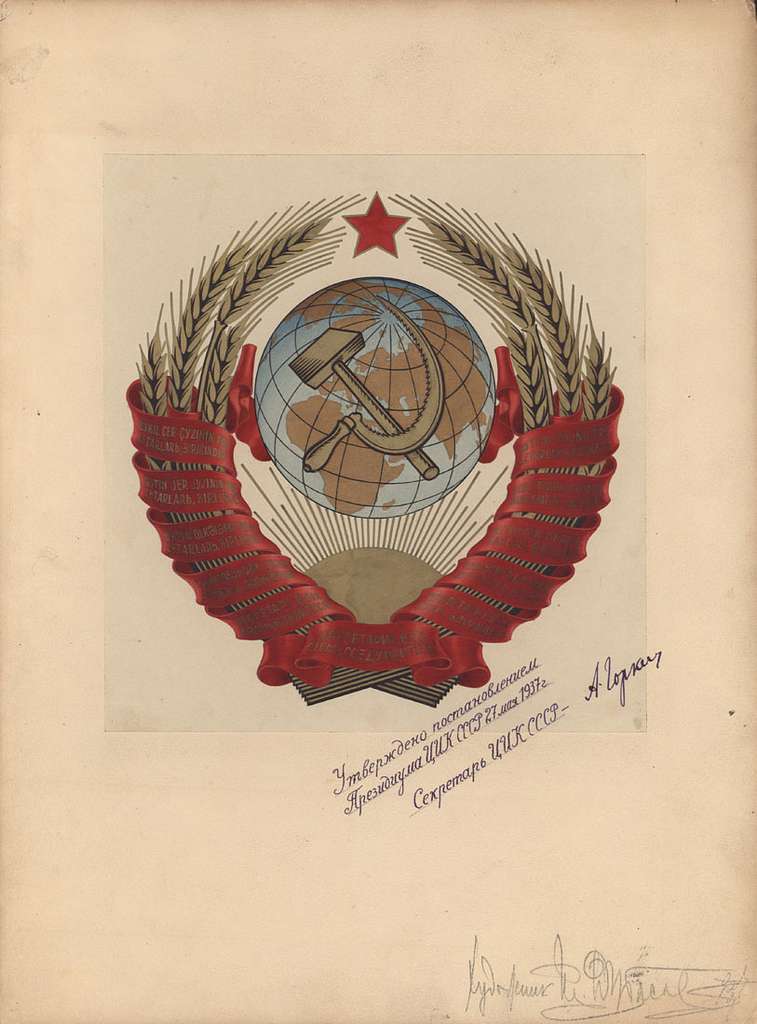
Why People Stil Associate Russia with Communism
The Soviet Union was a communist state for nearly 70 years, from 1922 until 1991. This long time made communism a big part of Russia’s identity. Vladimir Lenin started the Soviet state in 1917 and set the stage for communist ideology Russia for years to come.
The Cold War made the USSR a symbol of communism worldwide. For nearly five decades, it stood against Western capitalism and democracy. This rivalry made people see Russia only as communist.
Older generations remember the Soviet threat and communist regime Russia from the Cold War. These memories are passed down through schools, families, and culture, keeping old views alive.
Several factors keep the Russia-communism link strong:
- Historical duration: Seven decades of Soviet rule created lasting memories
- Global influence: The USSR’s leadership made Russia known as communist
- Educational frameworks: School curricula often focus on Cold War history, missing Post-Soviet changes
- Political rhetoric: Today’s politics sometimes use old Soviet comparisons, despite changes
The Soviet Legacy in Popular Culture
Soviet images and stories are everywhere in popular culture. Movies, documentaries, games, and TV shows often use Soviet settings and characters. These stories usually focus on Cold War drama, not modern Russia.
Icons like the hammer and sickle are well-known worldwide. They appear in media, linking communist ideology Russia with the Soviet-Era. These symbols instantly bring up old Russia.
Stories about KGB, espionage, and control are common in media. They make for exciting stories but keep old Russia stereotypes alive. The entertainment world loves Cold War themes, keeping Russia’s image stuck in the past.
Media sometimes uses old Soviet terms when talking about Russia today. Saying “Iron Curtain” or “Soviet-style” tactics in news articles confuses the past with present Russia. This mixing of old and new makes it hard to see Russia’s current politics.
Soviet looks and stories in media keep the Russia-communism link alive. Each new generation sees these through movies and TV, keeping the old Russia image alive. This keeps the idea of Russia as communist in people’s minds, even though it’s not true today.
The Fall of the Soviet Union in 1991
By the late 1980s, the Soviet economy faced huge problems. It couldn’t compete with Western markets. People faced shortages and new technologies were slow to arrive.
Mikhail Gorbachev tried to fix things with reforms. But these changes showed the system’s deep flaws. The Soviet Union collapse happened on December 26, 1991, when the red flag came down from the Kremlin for the last time.
This event started a big change in Russia. It moved from communist rule to a new system. This change affected not just Russia but the whole world.
Economic Collapse and Political Upheaval
The Soviet economy got worse in the 1980s. It couldn’t grow because of old equipment and lack of investment. Despite official claims, goods were hard to find.
Gorbachev introduced Perestroika in 1985 to make things better. He also brought in Glasnost to open up the country. But these moves weakened the Communist Party.
With glasnost, people could speak out against the government. Nationalist groups wanted to be free from Moscow. The Baltic states were at the forefront of this movement.
The economy got worse as the government lost money and debt grew. The war in Afghanistan cost a lot but didn’t help. By 1990, things were too bad for small fixes to work.
Gorbachev let other parties exist in March 1990. This ended the Communist Party’s rule that started in 1917. New parties and local governments started to challenge Moscow’s control.
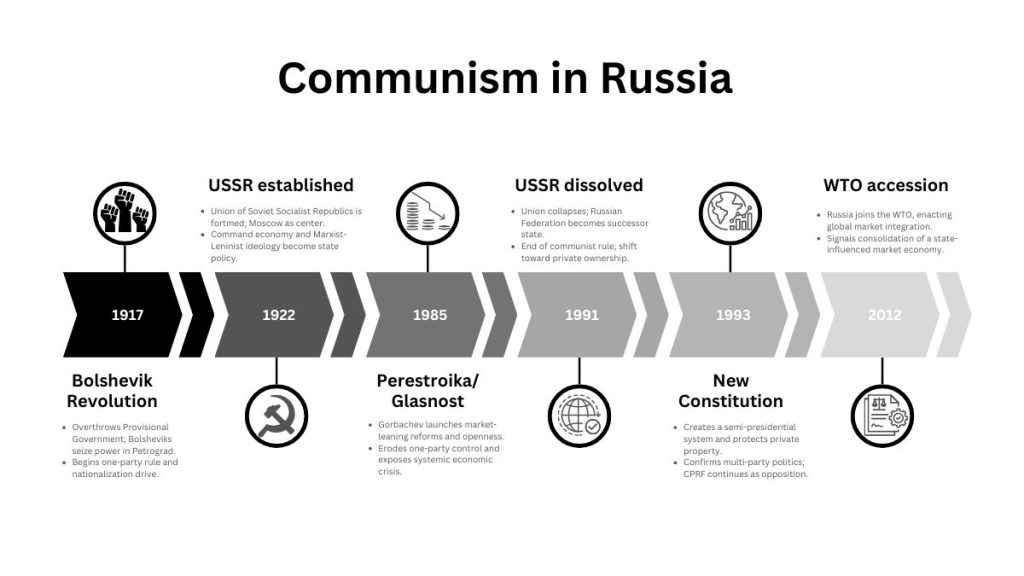
The Dissolution Process
In March 1991, a referendum asked if people wanted to keep the Soviet Union. Most said yes, but the country was already falling apart. Republics wanted to be free, no matter the vote.
In August 1991, hardline Communists tried a coup to stop the breakup. Military units surrounded buildings in Moscow. Boris Yeltsin stood up to them, showing he was ready to lead.
The coup failed in three days. This made the Soviet Union collapse even faster. Yeltsin became more powerful.
By autumn 1991, republics declared their freedom. Ukraine voted for independence in December. Without Ukraine, the Soviet Union couldn’t stay together.
On December 25, 1991, Gorbachev resigned. The next day, the Soviet flag was replaced with the Russian tricolor. The dissolution was official, ending the Soviet Union.
Transition to a New Political System
Boris Yeltsin became the first president of Russia. He had to create a new system from the old communist one. This was a hard and painful time for many Russians.
Yeltsin banned the Communist Party after the failed coup. This ended the party’s control over society for the first time in 70 years. The government took over party property and stopped its activities.
The government started to change the economy. It privatized state-owned businesses quickly. This created a group of powerful oligarchs who would shape Russian business for years.
Politics also changed a lot. The 1993 Constitution created a new government. Russia became a federal state with a strong president and a two-chamber legislature.
The table below shows the main differences between the Soviet system and the new Russian government:
| Aspect | Soviet System (Pre-1991) | Russian Federation (Post-1991) | Key Change |
|---|---|---|---|
| Economic Model | Centrally planned economy with state ownership | Market-based economy with private property | Introduction of capitalism and privatization |
| Political Structure | Single-party communist rule | Multi-party semi-presidential republic | Democratic elections and party competition |
| Governance Framework | Supreme Soviet and Communist Party control | Presidential system with Federal Assembly | Separation of powers under 1993 Constitution |
| Ideology | Marxist-Leninist principles mandatory | No official state ideology required | Political and ideological pluralism permitted |
The transition was very hard. Inflation soared, and people lost a lot of money. Pensioners and state workers were hit the hardest.
Despite the challenges, Russia moved away from communism. The new system was different, with private businesses leading the economy.
By the mid-1990s, Russia had a basic market democracy. But questions about the reforms’ success would last for years. The old communist ways were hard to shake off.
Is Russia Still Communist?
The Soviet Union fell apart in 1991, ending communism in Russia. This event brought a new system of government. The question is Russia still communist has a clear answer based on law, economy, and politics.
Russia now has a capitalist market economy with private ownership. The old communist single-party state is gone. To recall what replaced it, we need to look at the political and economic changes after 1991.
The Definitive Answer
Russia is not a communist country. The communist system ended when the Soviet Union dissolved in December 1991. The Communist Party of the Soviet Union was banned that year, ending the communist rule.
The 1993 Constitution made Russia a federal semi-presidential republic. It has separate powers for the executive, legislative, and judicial branches. This setup is not like communist single-party rule. Private property rights are protected, which goes against communist ideas of collective ownership.
Russia’s economy is based on capitalism, not communist central planning. Private businesses and stock markets are common. International corporations also operate in Russia. These facts show that communism is not back, even with some authoritarian trends.
What Replaced the Communist System
The Russia government system changed to a federal republic after 1991. The 1993 Constitution made the presidency the head of state and created the Federal Assembly. This was a big change from Soviet rule.
The economy also changed. In the 1990s, many state-owned businesses were privatized. This ended the Soviet command economy. Now, the market decides how resources are used, not the government.
| Aspect | Soviet Communist System | Current Russian System |
|---|---|---|
| Economic Structure | Command economy with state ownership of all production | Market economy with private ownership and capitalism |
| Political Framework | Single-party communist dictatorship | Multi-party federal semi-presidential republic |
| Property Rights | Collective ownership, no private property | Legal protection of private property rights |
| International Trade | Limited trade within socialist bloc countries | Full integration into global capitalist markets |
Russia joined the World Trade Organization in 2012. This move shows it’s part of the global capitalist system. Private banks and state institutions work together. Foreign investment comes into Russian markets. These steps are not possible under communism.
The Russia government system today is not communist. Many political parties compete in elections, but with limits. Private media and state-controlled channels exist. People own property, start businesses, and build wealth.
Russia’s Current Government System Explained
The government of Russia today is very different from its Soviet past. It was set up in 1993 with a new system. This system spreads power across different parts, unlike the old Soviet way.
After the fall of communism, Russia created a complex system. Russian politics today mixes different democratic ideas. The system balances the power of the president, the parliament, and the courts.
Federal Semi-Presidential Republic Structure
Russia is a federal semi-presidential republic. It has parts of both presidential and parliamentary systems. This mix creates a system with two leaders.
The president is the head of state with a lot of power. They handle foreign policy, the military, and can pick the prime minister. But, the parliament must agree on the prime minister.
The prime minister is in charge of domestic policy. They lead the government. This is different from countries where one person does both jobs.
Russia is divided into 85 federal subjects. These include republics, territories, and cities. Each has its own government.
This setup lets different areas have their own rules. But, the central government keeps everything together.
The 1993 Constitution and Democratic Framework
The 1993 Constitution came after a big fight between President Yeltsin and the old parliament. It brought in new rules like regular elections and checks on power.
The constitution made a bicameral Federal Assembly. This has two houses: the State Duma and the Federation Council. The State Duma has 450 members elected in different ways.
The State Duma is the main law-making body. They make laws and can approve or reject the president’s choices for prime minister.
The Federation Council looks at laws from the State Duma. They focus on things that affect different areas. They also approve big decisions like going to war.
The constitution also says there should be many political parties. It protects free speech and the right to gather. It also makes sure elections are regular and the courts are independent.
How Power is Distributed in Modern Russia
In reality, power in Russia is not always as the constitution says. Critics say the system is not truly democratic.
The president has a lot of power. They can veto laws and make important decisions. Changes in 2020 gave the president even more power.
The State Duma makes laws, but the president can stop them. The ruling party has most of the seats, making it hard for other parties to pass laws.
Groups like Freedom House and the Organization for Security and Cooperation in Europe have raised concerns. They say elections are not fair, and there’s too much control over the media and politicians.
The courts are not always independent. Critics say the president can influence important cases. The Constitutional Court is supposed to check laws, but some question its independence.
Local governments have some freedom, but the central government has a lot of control. This is different from the early days of Russia’s freedom.
The difference between the rules and how things work is a big topic in Russian politics. Russia has elections and checks on power, but it’s not like the democracies in Western Europe or North America.
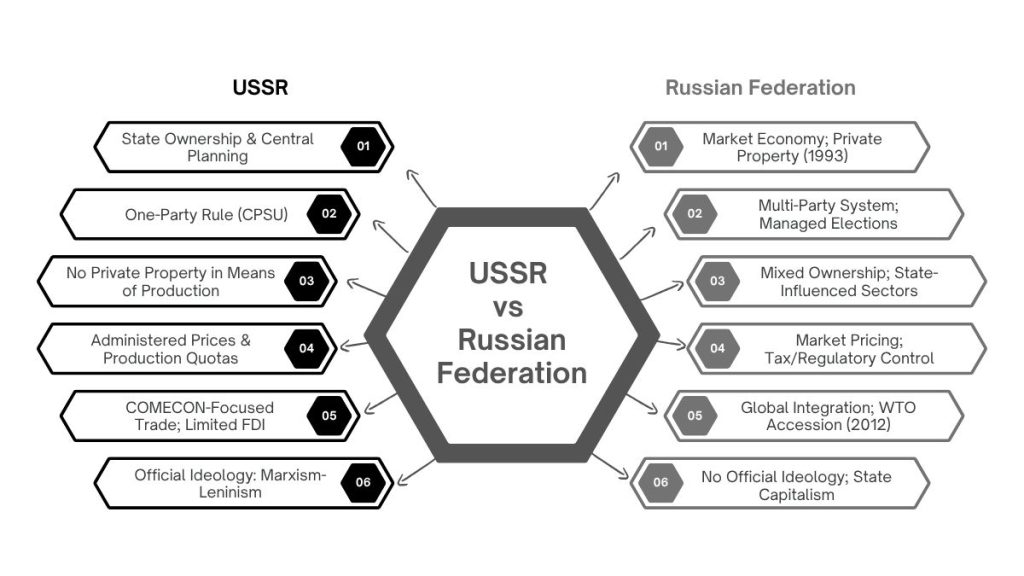
The Communist Party of the Russian Federation Today
The Communist Party of the Russian Federation is a unique entity in modern Russian politics. It’s a communist organization in a capitalist democracy. The party holds seats in parliament, publishes newspapers, and campaigns openly. It advocates for socialist economics, despite being part of a multi-party system.
Its role has changed a lot from Soviet times. Now, it competes with other parties in elections. These elections decide who gets into parliament but rarely challenge the president’s power.
Party History and Founding
The Communist Party of the Russian Federation started on February 14, 1993. It was formed after President Boris Yeltsin allowed communist groups to organize again. Gennady Zyuganov, along with former Soviet officials, led the founding.
Quickly, the party became the main successor to the banned Communist Party of the Soviet Union. It claimed 500,000 members soon after starting. This made it Russia’s largest political group by membership.
The party won big in the 1995 State Duma elections. Zyuganov ran against Yeltsin in 1996 and got about 40% of the vote in the second round. This showed a lot of Russians supported communist ideas during a tough time.
Current Leadership and Membership
Gennady Zyuganov has led the party from its start in 1993. Ivan Melnikov and Yury Afonin are his first deputy chairmen. The party has committees all over Russia and publishes Pravda, the old Soviet newspaper.
Membership has dropped a lot from the 1990s. Now, there are about 160,000 members as of 2024. Young people are less interested in communist ideas than their parents were.
The Leninist Komsomol is the party’s youth group. It’s like the old Komsomol, training young people for the Communist Party. They try to attract students and young workers with education and social activities.
Electoral Performance and Parliamentary Presence
The Communist Party is Russia’s second-biggest party by number of seats in parliament. It runs in national and local elections. But, it’s hard for the party to change things because United Russia has most of the power.
Recent Election Results
The party has 57 seats in the 450-seat State Duma. This makes it the biggest opposition group in the lower house. In the 2021 elections, it got about 19% of the vote.
The party usually gets 10-20% of the vote in elections. This shows it has a stable but small group of supporters. Three regional governors are part of the CPRF, but they often work closely with the Kremlin.
| Electoral Metric | Current Status | Comparative Position |
|---|---|---|
| State Duma Seats | 57 of 450 | Second-largest faction |
| Typical Vote Share | 10-20% range | Stable minority support |
| Regional Governors | 3 affiliated executives | Limited executive power |
| Party Membership | Approximately 160,000 | Declining from 500,000 peak |
Political Influence and Limitations
The Communist Party’s influence is limited, even with seats in parliament. United Russia has a majority, so it can pass laws without opposition. The president has a lot of power, making it hard for the CPRF to change things.
The party supported Russia’s 2022 invasion of Ukraine. This shows it acts more like managed opposition than a real alternative. Critics say it helps make Russia’s system look more democratic without really changing it.
The CPRF wants to change things through parliament, not revolution. This is different from the Bolsheviks in 1917. The party wants more state control, better social programs, and fair taxes. But, it works within a capitalist system.
Communist Ideology in Contemporary Russian Society
Russia’s capitalist system and Soviet nostalgia show a complex relationship with its past. Modern Russia is not communist anymore, but the Soviet era’s impact is seen in culture and policy. People’s feelings about this change are complex, not just about wanting communism back.
The Persistence of Soviet Nostalgia
A 2018 poll by the Levada Center found 66% of Russians regretted the Soviet Union’s end. This shows how much of Russia’s society is tied to its communist past. People are unhappy with today’s economy and the loss of Soviet power.
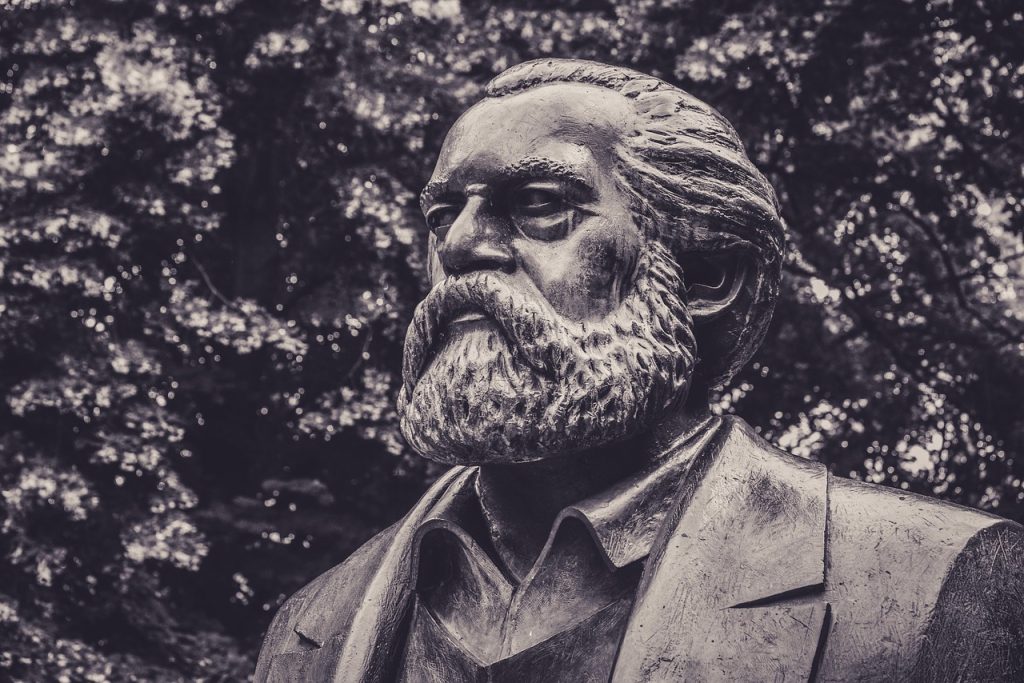
Older Russians miss the Soviet era’s job security, affordable housing, and free education. The economic troubles after 1991 made these memories even more precious.
Younger Russians, who grew up after the Soviet collapse, are less nostalgic. They remember the 2000s’ stability and growth, not the Soviet era. This age gap shapes how people view Soviet nostalgia today.
Socialist-Influenced Policies in the Current System
Russia has kept some socialist policies from the Soviet era, even with a capitalist system. It offers universal healthcare and state pensions, but these have declined.
The Communist Party of the Russian Federation wants to expand these policies. They aim for more state control and better welfare. These ideas appeal to those worried about wealth gaps and social safety nets.
But Putin’s rule has led to “state capitalism,” not socialism. This mix of market and state control is different from both capitalism and communism. It keeps some social benefits but rejects communist planning.
Contemporary Public Attitudes Toward Communism
Views on communism vary by age, education, and where you live in Russia. People in Moscow and St. Petersburg are less likely to support communism than those in industrial areas hit hard by economic changes.
Regions with tough Soviet pasts are more critical of communism. But areas with Soviet investment and development are more positive.
It’s important to see the difference between cultural nostalgia and political support for communism. Most Russians have fond memories of the Soviet era but don’t want to go back to communism. This shows how Soviet memories are more cultural than political for most.
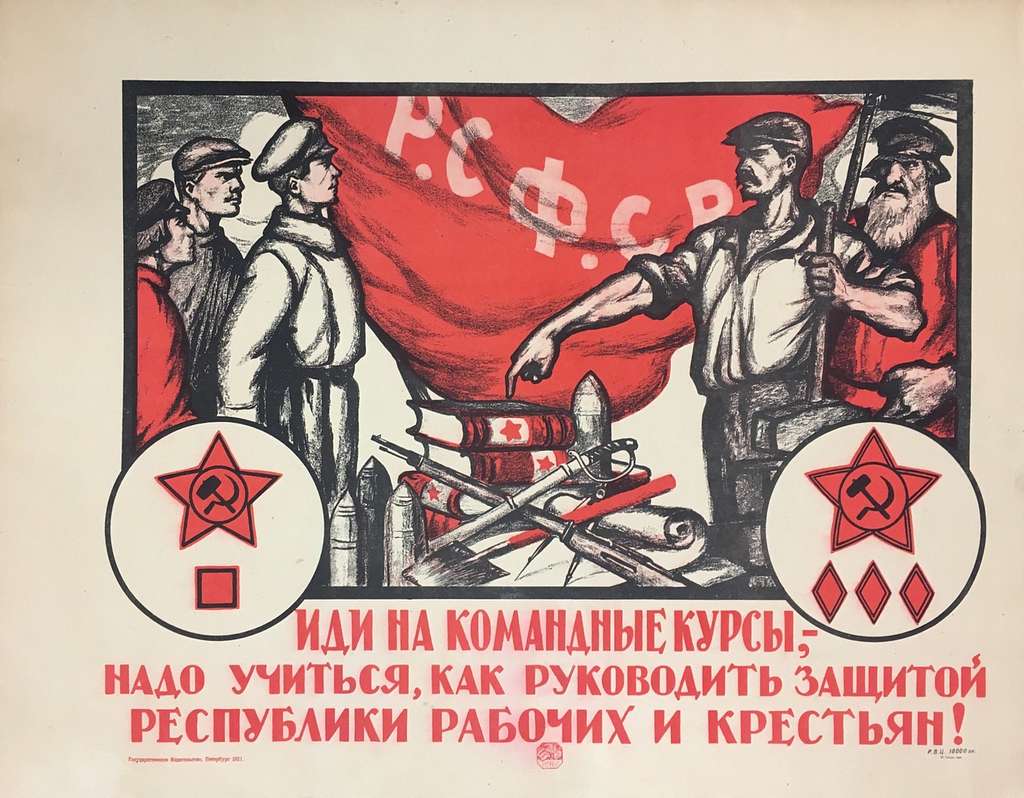
Communist ideology’s role in Russia today is complex. It’s shaped by history, not a push for communism. Nostalgia, policy preferences, and varied views create a rich but complex landscape.
The Russian Political Landscape Under Vladimir Putin
Russia under Vladimir Putin is a unique blend of state power and market forces. The system he has created is far from the communist system that came before it.
The Russian government today is a mix of authoritarian control and capitalist economics. This system is complex and needs careful analysis.
Authoritarian Capitalism vs Communist Economics
Putin’s Russia follows fundamentally capitalist principles despite its strict political control. The economic system is different from communist ideology in many ways. Communist theory aims to abolish private property and class differences.
In modern Russia, private property and wealth among the elite are widespread. Billionaires own major industries. Stock markets operate freely, driven by profit.
Experts like Freedom House see Russia as authoritarian, not communist. This view reflects the limits on political opposition and media freedom. Yet, the economy remains capitalist.
State-Controlled Market Economy
The Russian government has a big say in every sector. Companies like Gazprom control natural gas, and Rosneft dominates oil. This is different from Soviet-style central planning.
Most of the economy is run by private companies with legal protections. Market forces set prices and decide production for most goods. This system is more like State-Capitalism seen in places like Singapore or Saudi Arabia.
Russian businesses are part of the global market through trade and investment. The economy focuses on making profits and growing private wealth. This goes against communist economic principles.
| Economic Feature | Putin’s Russia | Communist System |
|---|---|---|
| Property Ownership | Private property rights with oligarch-controlled industries and individual wealth accumulation | Collective ownership with state control of all production means and property abolition |
| Market Structure | Market-based pricing with profit motives driving most sectors and stock market operations | Central planning with government-set prices and production quotas for all goods |
| Strategic Sectors | State influence in energy and defense but private operation in other industries | Complete state ownership and control across all economic sectors without exception |
| Class System | Extreme wealth inequality with billionaire class and large income disparities | Classless society goal with wealth redistribution and elimination of economic hierarchies |
| Global Integration | Active participation in international markets with foreign trade and investment flows | Limited external trade focused on socialist bloc with restricted capital movement |
Nationalism and Conservative Values
Putin’s Russia is based on Russian nationalism and conservative social values, not Marxist-Leninism. The government values national sovereignty and traditional family structures. It also supports the Russian Orthodox Church.
This approach is a big change from Soviet internationalism and atheism. Today, Russian politics focus on cultural uniqueness against Western liberalism. This marks a big shift away from communist ideology.
United Russia, the main party backing Putin, holds over 60% of parliamentary seats. It calls itself conservative, not communist. The Communist Party of the Russian Federation exists but has little influence.
The Role of Ideology in Putin’s Russia
Putin’s government promotes an ideology of Russian exceptionalism and traditional values. It emphasizes national pride and historical greatness, not worker solidarity or class struggle. The state supports Russian Orthodox Christianity as a cultural foundation, unlike Soviet atheism.
This ideology is a big contradiction to communist principles. Soviet communism supported international worker unity and rejected nationalism. Putin’s Russia, on the other hand, sees nationalism as a core principle.
Conclusion
The question “is Russia communist” has a clear answer: No. Russia remains non-communist—a centralized semi-presidential system with a state-influenced market economy. The Communist Party functions as an opposition faction but does not govern, and 2024–2025 indicators (elections, ratings, macro data) confirm continuity in this post-1991 framework.
The Communist Party of the Russian Federation is the second-largest party in parliament. Some people in Russia miss the old Soviet Union’s stability. But, this nostalgia doesn’t mean they want communism back.
Many people confuse Russia with communism because of the Soviet Union’s past. But, Russia has moved away from communism. It now follows authoritarian capitalism, not communist economics, after 1991.
FAQ
Is Russia Stil a Communist Country?
No, Russia is not communist anymore. The communist system ended in December 1991 with the Soviet Union’s fall. Today, Russia follows a capitalist economy and has private property rights.
What Type of Government Does Russia Have Now?
Russia is a federal semi-presidential republic. It has a president and a prime minister. The president has a lot of power, and the prime minister handles domestic policies.
Does the Communist Party Stil Exist in Russia?
Yes, the Communist Party of the Russian Federation is legal in Russia. It was founded in 1993 after the ban was lifted. The party has 57 seats in the State Duma but doesn’t have power in a capitalist system.
Is Vladimir Putin a Communist?
No, Vladimir Putin is not communist. He believes in Russian nationalism and conservative values. His government focuses on national sovereignty and traditional values, not communism.
What Is the Difference Between Russia’s Current System and the Communist Regime?
Russia’s system is different from communism. It has private property and a market economy. Putin’s Russia is not communist because it doesn’t have collective ownership or classless society.
Does Russia Have a Capitalist Economy?
Yes, Russia has been capitalist for over 30 years. It moved from a command economy to a market-based system. Russia has private property and joins global markets.
Does Russia Stil Have Socialist Policies?
Russia has some socialist policies, like universal healthcare. But, Putin’s government is more capitalist. The CPRF wants to expand these policies, but it’s not current policy.